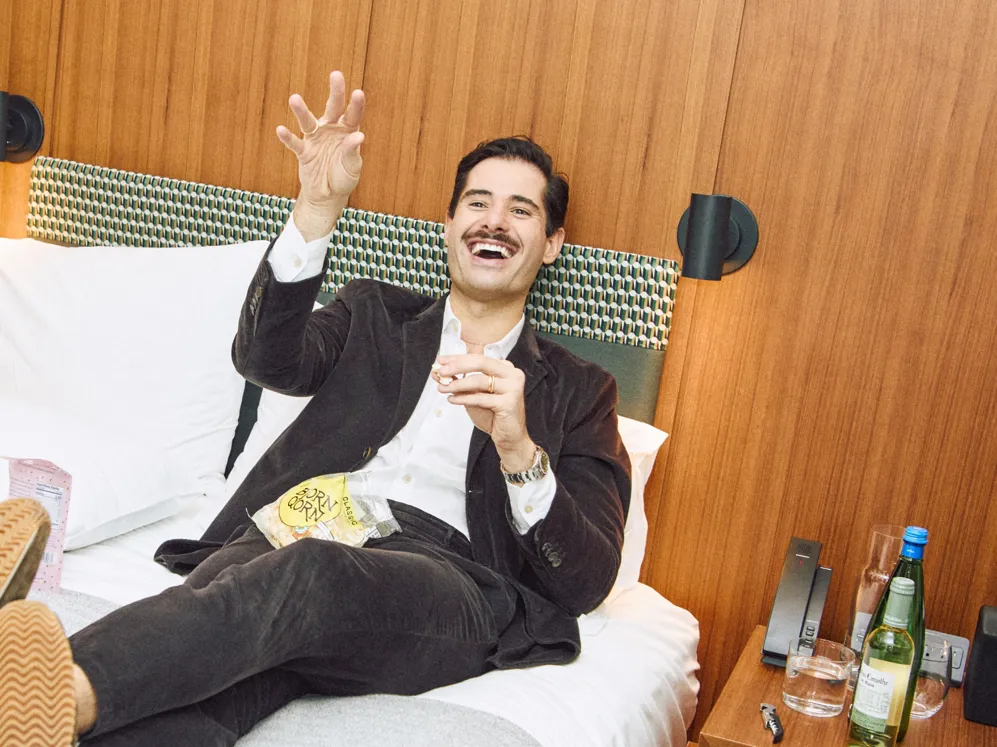
Words Allison Reiber DiLiegroImages Michal Rzepecki
Born in Portugal and raised in the U.S., Eric has always had a worldly way about him. He studied art and fashion at Central Saint Martins in London, then launched his career at Acne Studios, where he discovered a gift for designing customer experiences. “When I joined Acne, we had just 9 stores—four years later, we had over 20,” Eric recalls. “I lived everywhere—Korea, Australia, you name it. That experience sparked my love for hospitality.”
A decade ago, he made the leap from fashion to hotels, bringing with him a refined sense of aesthetics and a deep understanding of how to connect with the customer. After years spent collaborating with some of the top names in the hospitality world, Eric was invited to join The Moore in Chelsea, Manhattan.
There, he’s dedicated himself to building a space that feels warm, authentic, and rooted in its neighborhood. We sat down with Eric to talk about his vision for The Moore, the path that brought him there, and his advice to those just getting started.
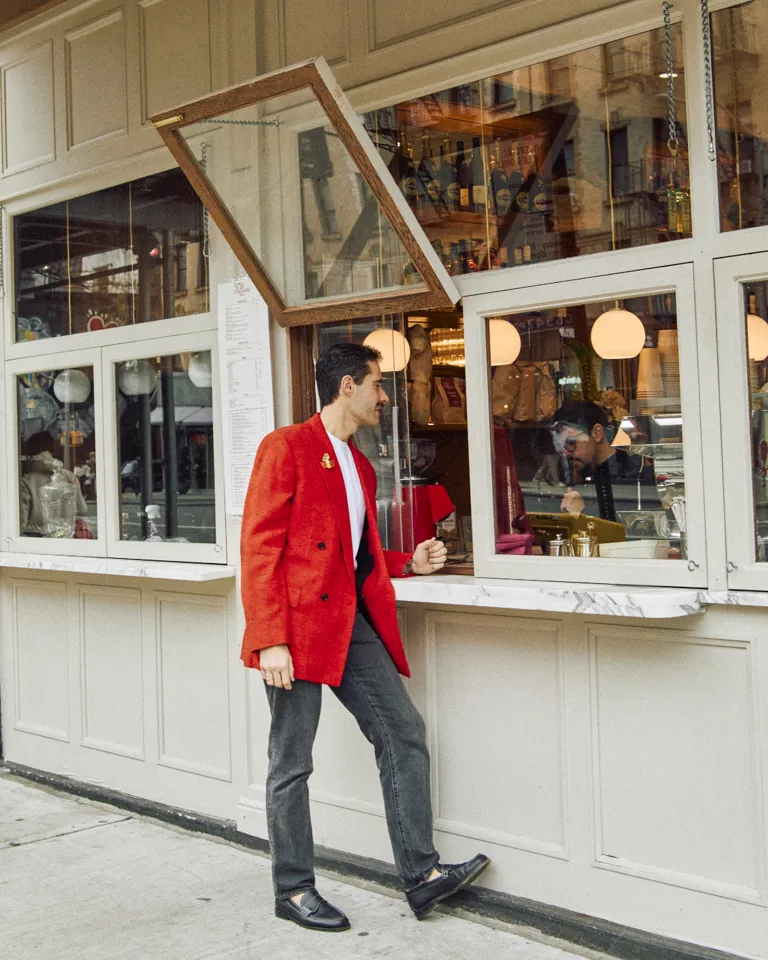
Terrence Lowenberg, the owner of the hotel, was looking for a partner to help build a new concept for the building. He believed in what I brought culturally, and he gave me full creative freedom to reimagine it. So, we began shaping what would become The Moore.
I wanted to find a balance between Terrence’s masculine style and my own feminine sensibilities. The goal wasn’t to offer excess—no 15 restaurants or endless amenities—but to become a true neighborhood hotel for the people who live around us.
The building itself is historical, so we couldn’t change the room configurations. That made us focus on making each space the best it could be. We brought in Vanessa Guilford as our interior designer, worked with Bower Studios on custom mirrors, and selected Cassina and B&B Italia furniture for a retro-Italian 70s vibe in the lobby.
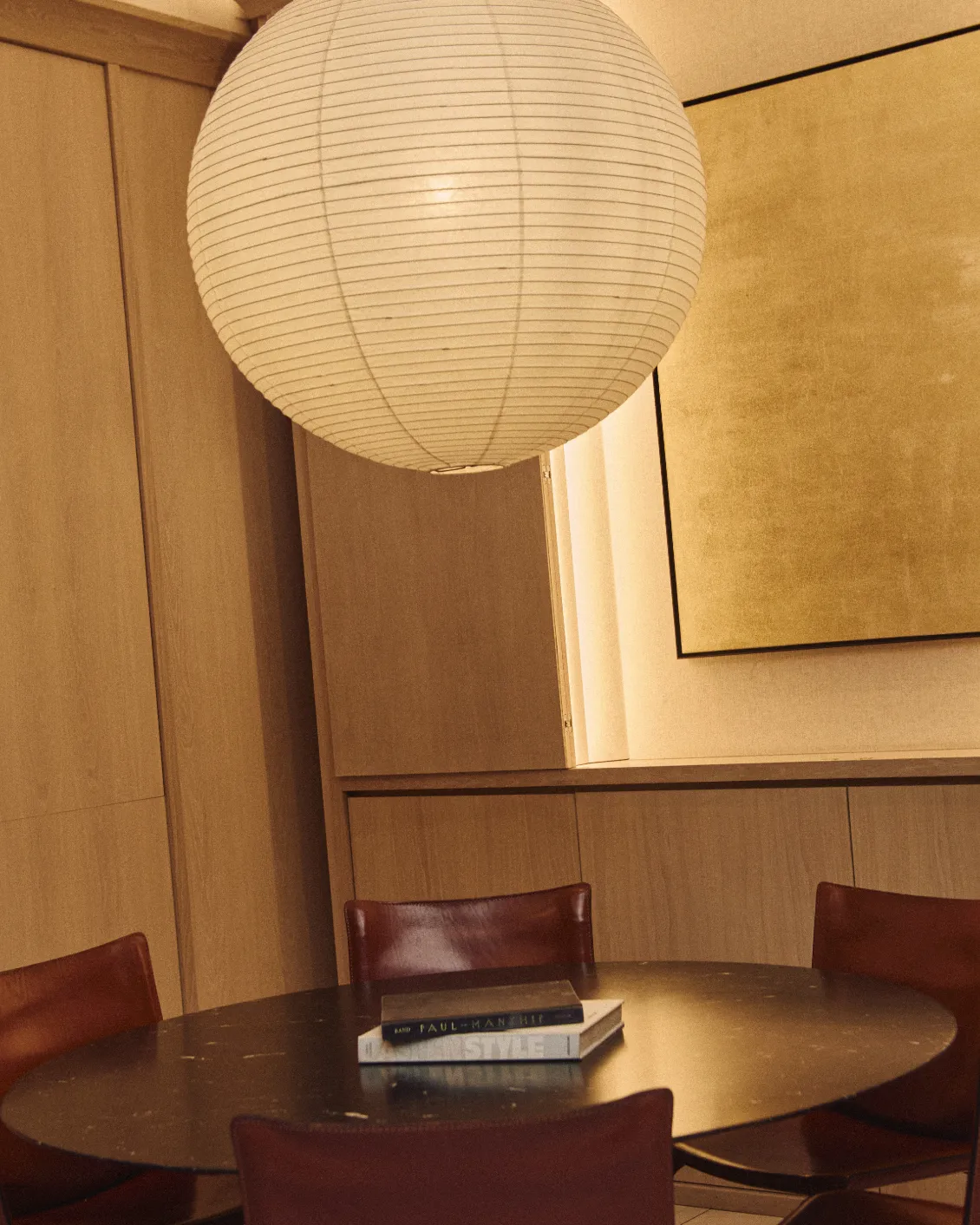
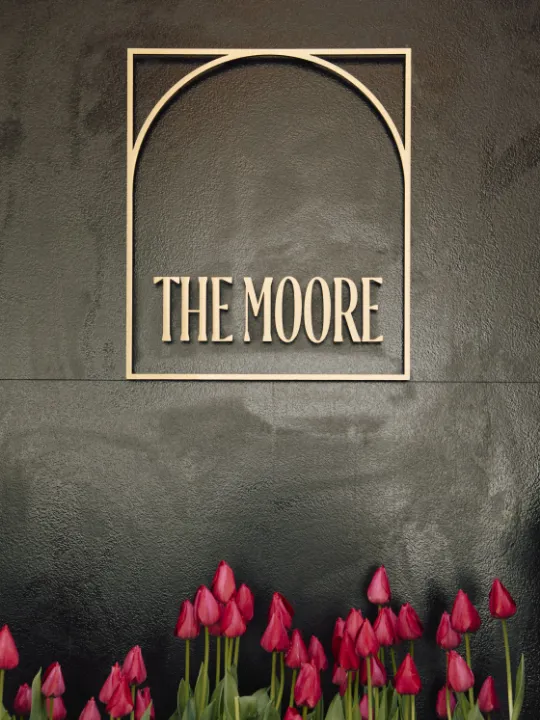
The hotel is named after Clement Clarke Moore, the writer and scholar who developed Chelsea in the 1800s.
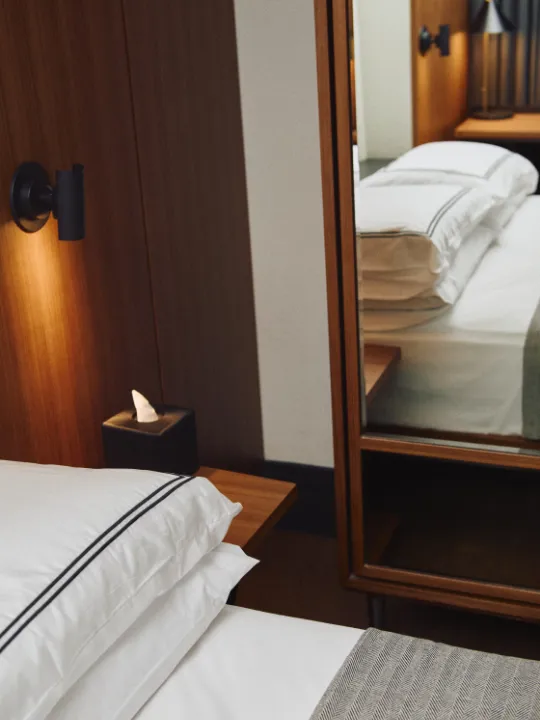
I think I embody both feminine and masculine energies. Some days I lean more into the masculine—I’ll wear a beautiful suit with a t-shirt underneath. Other days, I’m in love with bags and unnecessary accessories—that’s definitely part of my more feminine side. I’m not afraid of color—I love a pop. That’s something we really leaned into at The Moore.
Our base tones are navies, browns, burgundies, with a lot of beautiful woodwork. But we contrasted that with really vibrant colors in the art. That mix of strong, colorful pieces on a classic base—I think that’s a great balance of masculine and feminine energy.
It changes a lot! I’m a Prada boy in my workspace—very simple, clean lines when I work.
Then I have a lot of beautiful knits. Fall is my season, and I wear a lot of Jacquemus during that time. They have these beautiful, thick knits, and I’m all about a dramatic sweater. In the past few years, I’ve also developed a big eye for suiting. My good friend Saman Amel, who’s based in Stockholm, has a beautiful atelier and has been dressing me. I’ve really fallen in love with suits.
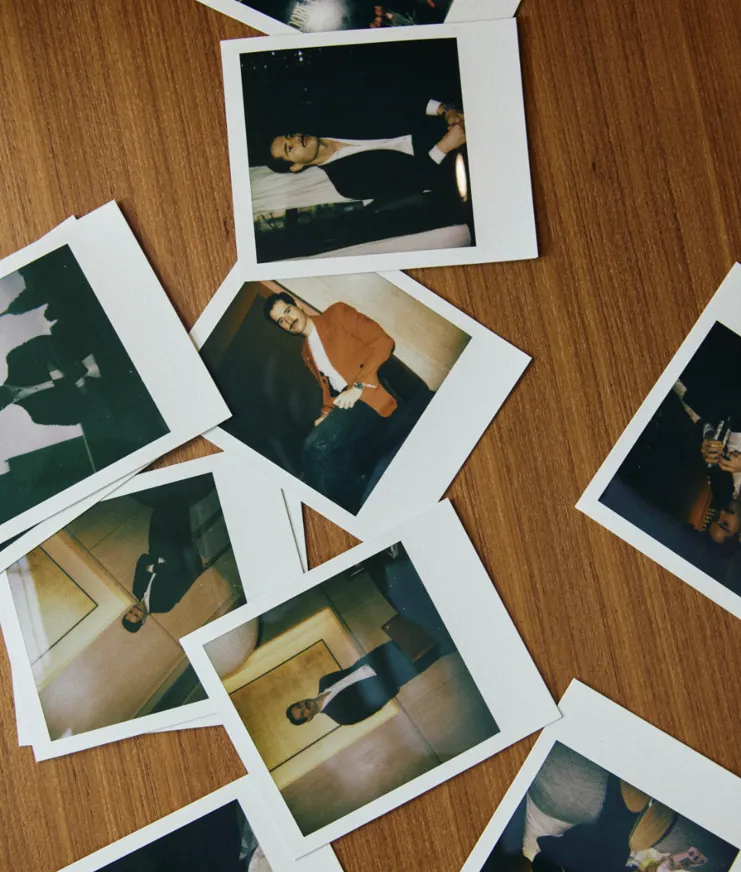
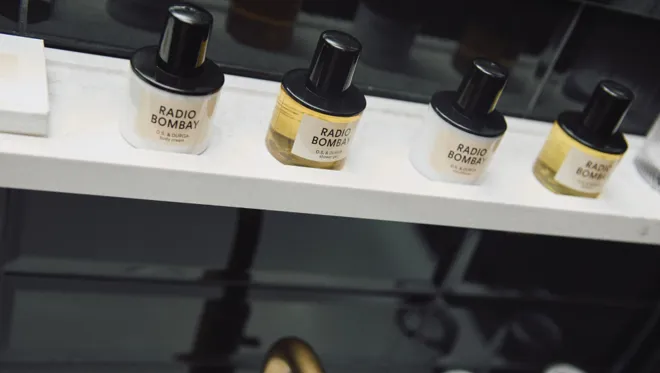
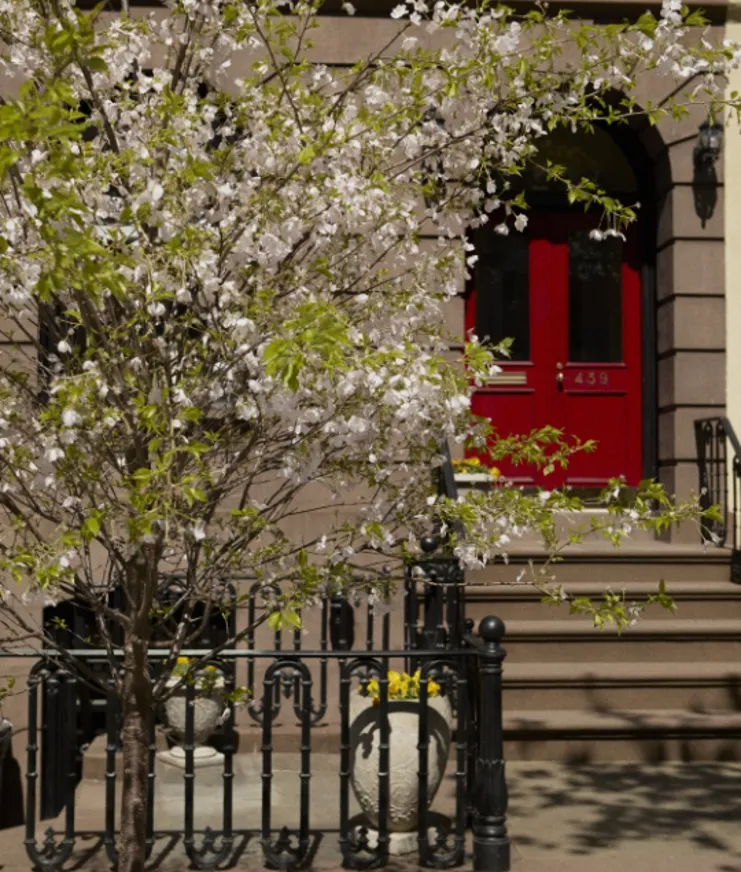
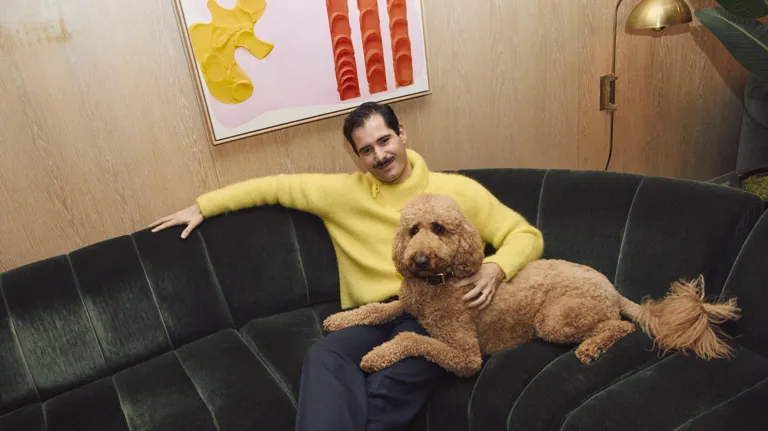
I wanted our service to be kind of flamboyant, exaggerated. That warmth and extra attention is the most feminine side of the brand. We hired staff who weren’t necessarily from hospitality backgrounds, but who were genuinely guest-focused. The person checking you in might also be making your coffee in the café, which makes the experience more fluid and personal.
We commissioned every piece from two artists I love: Lewis Venturelli, a Brooklyn-based artist who did all the corridor and two major lobby pieces, and Jean-François Le Minh, a Parisian artist who was previously based in Mexico City. Both are LGBTQ+ artists, which was also important to me in reflecting our community.
Chelsea has some of the most beautiful brownstones in New York, with tree-lined streets and deep history—especially in the LGBTQ+ community.
Yeah, that’s the heart of it. We wanted it to be a place where locals and travelers feel like they belong. And because we only have 81 rooms, we can provide a level of personalized service that larger hotels just can’t match. That’s something I’m really committed to in all future projects—keeping things under 100 keys to maintain that level of intimacy.
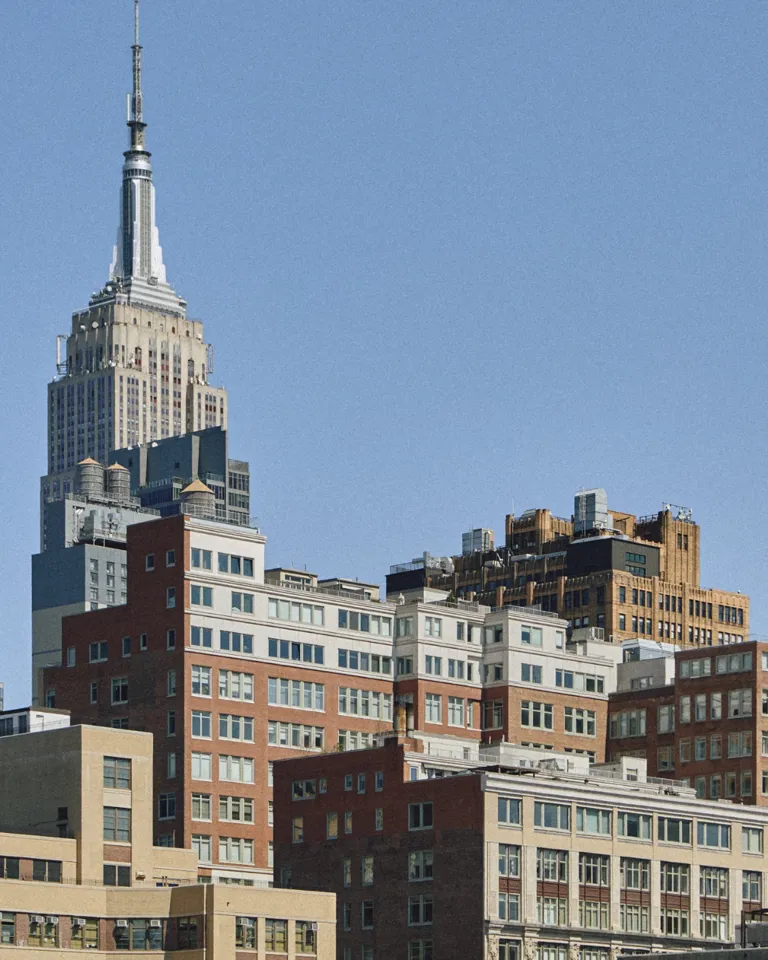
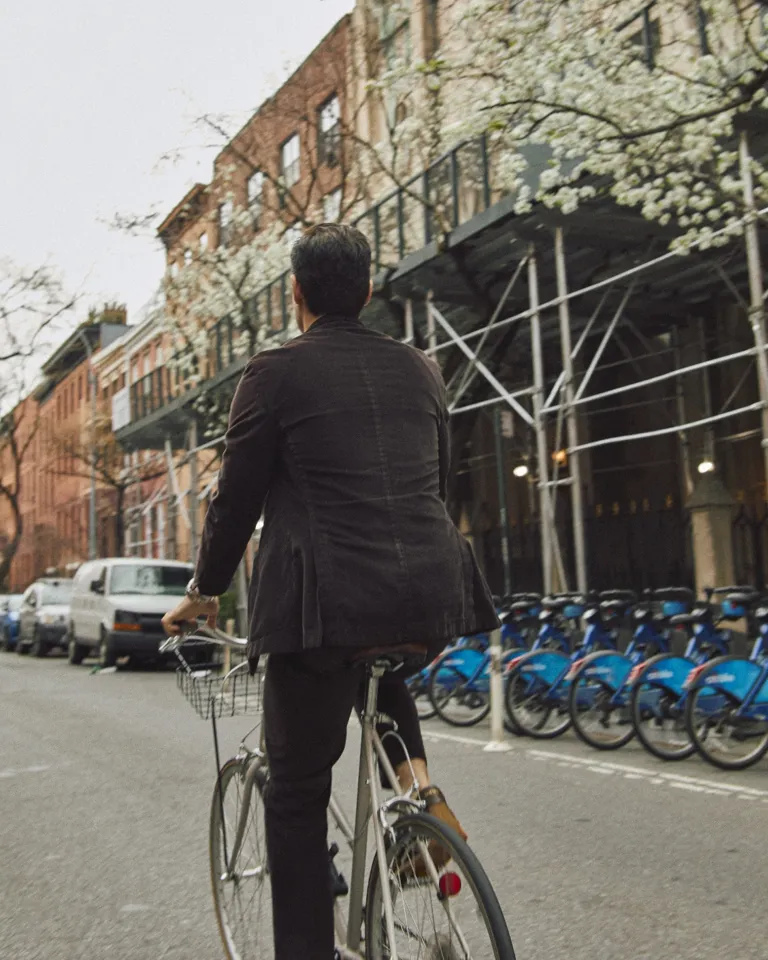
Chelsea has beautiful brownstones, tree-lined streets, and deep history—especially in the LGBTQ+ community.
Even though it’s technically a competitor, I love Hotel Chelsea. El Quijote and Café Chelsea are so chic. The history in that building is so rich, and the storytelling is beautiful. Seymour’s down the street is great, and Jack’s Wife Freda is a staple.
But my favorite place—and where I always encourage our guests to go—is Empire Diner, just two blocks away. It’s retro inside, which I love. Diners don’t really exist in Europe, so it feels special to me.
When I entered this industry, I was nervous I wouldn’t fit in—I was a weird fashion kid who didn’t know much about hotel operations or financials. I was made to feel there wouldn’t be a space for someone like me. But I stayed true to myself—that’s what got me the opportunity with The Moore—and it’s continued to open doors.
I’m just grateful I’ve been given the space to be true to who I am. I hope other people out there who want to do something similar, and maybe feel a little lost, will keep their heads down and stay true to themselves. That energy attracts the right people.